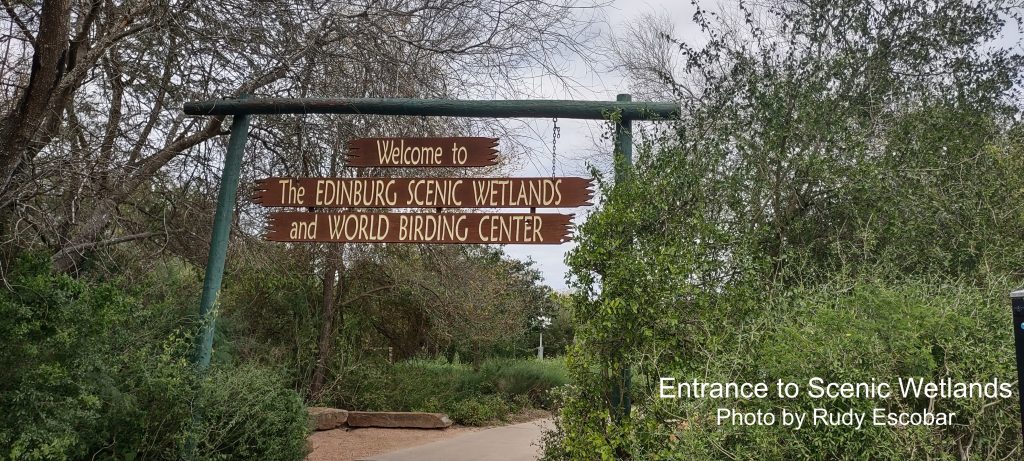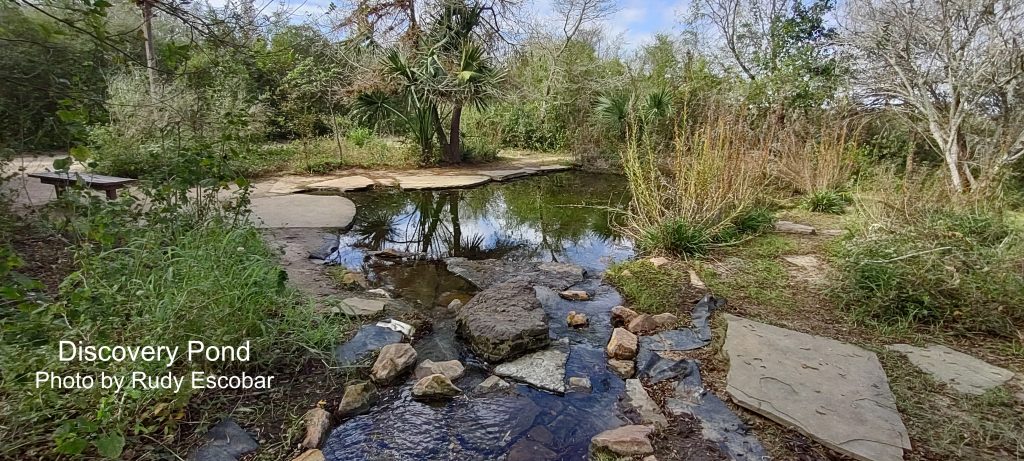by Rudy Escobar
Part of becoming a Texas Master Naturalist (TMN) and being one is to educate citizens about our environment and natural resources. As a TMN trainee, one of the requirements is to volunteer in order to become a certified TMN. Since I believe we should start early by educating our young, I chose to volunteer at the Edinburg Scenic Wetlands and World Birding Center.

One of the Center’s projects is the Edinburg 5th Grade Wetlands Program set up by Veronica Guzman, Environmental Education Coordinator. The program consists of three hands-on presentations: how pollution affects our streams and lakes, conducting water chemistry experiments in the Center’s Discovery Pond, and dip netting for macro invertebrates in the Center’s Dragonfly Pond. Edinburg Scenic Wetlands and World Birding Center is a site for student field trips.
I met with Ms Guzman and her staff, Denice Galvan and Victoria Cruz, prior to the arrival of the students. My duties were to assist the environmental education team including distributing water chemistry material, helping students dip netting for macro invertebrates, answering questions, and other duties as requested. As I became familiar with all three areas of instruction, I couldn’t help but notice the enthusiasm of the students. As they went from one different study area to another, the students’ excitement about environmental science became stronger.
At the Discovery Pond, the program leader explained to the students that they would be involved in conducting five water chemistry tests (pH level, nitrates, phosphates, turbidity, and dissolved oxygen) in order to determine the health of the pond. As the program leader asked questions, the students were more than eager to answer. I could see how hungry they were for information and anxious to volunteer their answers. They could hardly wait to get to the pond to do the water quality experiments.

Some of the comments I heard while they were conducting the pH test of the water, as well as the other tests were: “This is cool” (I didn’t think they used that phrase anymore) and “Wow!” The ability to get their hands dirty while conducting the experiments only heightened their enthusiasm. They wanted more! The students got that opportunity when each team presented their test results to the rest of the class. The overall conclusion from the test results showed that the pond was healthy. Again, I was struck by their enthusiasm toward what was happening around them and things that they had never noticed before.

The next phase was going to get dirty. At the Dragonfly Pond, the program leader, again, laid out the sequence of events in collecting macroinvertebrates from the pond using a small net or “dip netting.” As they collected the specimens, I often heard, very enthusiastically, “Look what I got!” After collecting specimens, the program leader helped the students in determining how many different species were found and their identification. The students really enjoyed participating in the investigation.
At the end of the course, I believe, the students had a better understanding of our environment and natural resources. Thestudents came away with the knowledge that they play an important part in understanding the working of our environment. Ms Guzman and her staff, Denice Galvan, and Victoria Cruz, have developed an outstanding program for the students. Their presentations and demeanor made me very comfortable in assisting them in any way I could.